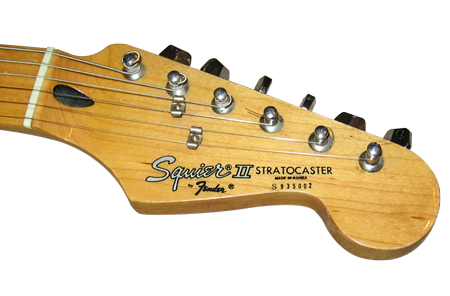

- SQUIER GUITAR SERIAL NUMBERS SERIAL NUMBERS
- SQUIER GUITAR SERIAL NUMBERS FULL
- SQUIER GUITAR SERIAL NUMBERS SERIES
The VN factory kept building VN models into 1997(VN7). In 1996 the CN factory moved to making ProTone models.
SQUIER GUITAR SERIAL NUMBERS SERIAL NUMBERS
They had serial numbers starting with CN and VN.
SQUIER GUITAR SERIAL NUMBERS SERIES
The Master Series models where built from 2004 to 2007.ĭuring the mid-90's Squiers were built at two factories. The 24 Series models were built from 2002 to 2004. Stagemaster and Showmaster models where built from 1999 to 2002.

Strats, Telecasters, Bullets, P-Basses and Jazz Basses were built from 1987 to 1998. Starting with the VN/CN gold logo models in mid-1995 the radius is 9.5”Īll other MIK strat/tele models built from mid-1995 until the end of 1998 have a 9.5” radius.
SQUIER GUITAR SERIAL NUMBERS FULL
All have full width wood bodies.įrom 1988 to mid-1995 all are 12” radius. The CN5, VN5, VN6 VN7, KV97, KV98 and the ProTones will have gold logos. Gold logo Squiers were built stating in mid-1995. The Squier IIs were the only silver logo Squiers to come with a thin laminate body.Īll gold logos will be a full width alder body or it will be ash if it’s a ProTone. They include strats with E9, S9, M1 and J1 serial numbers. The Squier II models also came with silver headstock logos. The exceptions to this are the 87' E7 and E10 models built by Young Chang This includes the CN/VN Fender Squier, the E9, S9 and S10 models. Most silver logo models will have full width laminate. If it says Squier and not Fender in Silver on the headstock logo and its Korean it is an 80's model. The CN2, CN3 and VN3 Fender Squier Series Strats will have a silver Fender logo on the headstock with a small Squier Series in black near the end of the headstock.

The silver headstock logos were used on models built in the late 80s and on the CN2, CN3 and VN3 Fender Squier Series strats built in 19. The black logo models were built between 19 with serial numbers starting with CN2, VN4, CN3, etc. They are the lowest quality of all the MIK models. Korean models with an all-black headstock logo will always have a thin laminated body. Below is information to help identify and determine the quality of these models. Fender began negotiations with several Japanese musical instrument distributors and reached an agreement with Yamano Gakki and to establish Fender Japan.In the late 80’s and 90’s Squiers were built in Korea. Fender was also losing sales in Japan to Japanese guitar brands such as, and and the establishment of would benefit Fender sales in Japan, as well as overseas. In the early 1980s, Japanese labour and production costs were much lower than in America and to compete with the Japanese made guitars, Fender moved the lower priced Fender guitar production from America to Japan. The higher priced Fender guitars were made in the United States and could not compete with the lower prices of Japanese made Fender copies. In the late 1970s and early 1980s Fender was facing competition from lower priced Japanese made guitars. Until the introduction of the Fender Squier series, Fender had never produced lower priced guitars based on its main and models and had always used different model designs for its lower priced guitars. Squier Guitars (1982-present) Before the Fender Squier line of guitars was introduced in 1982, Fender was making lower priced guitars such as the at its plant.


 0 kommentar(er)
0 kommentar(er)
